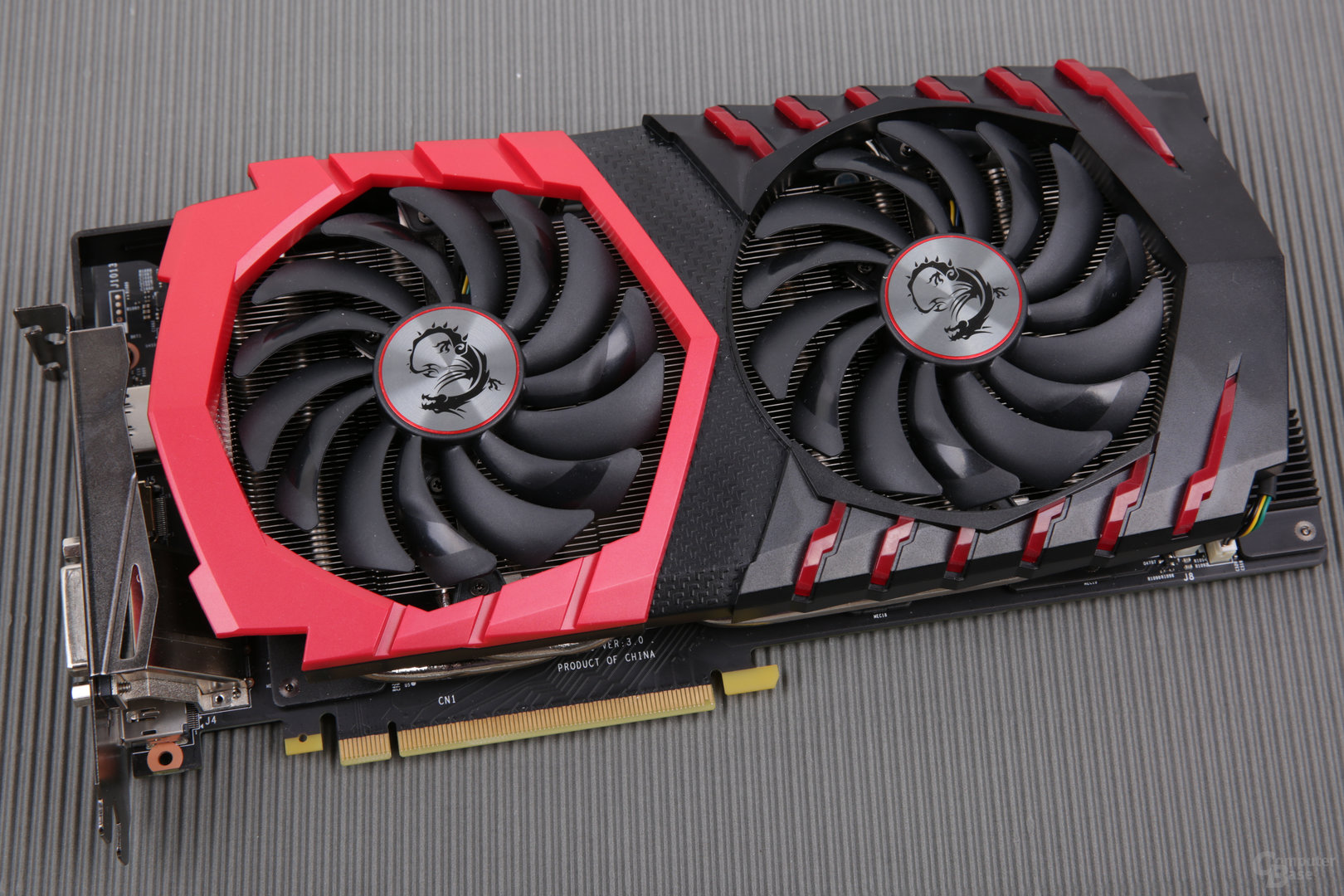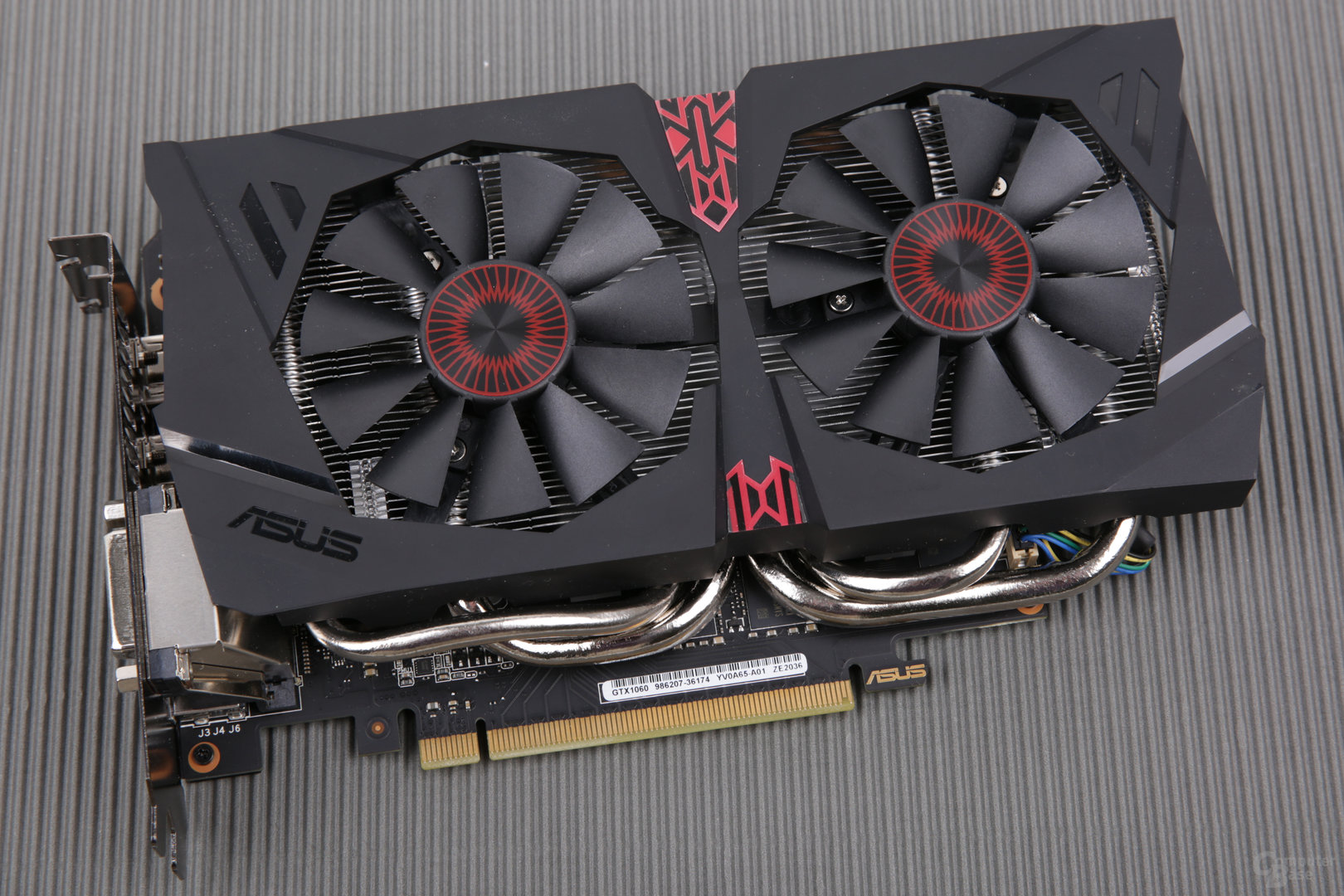GTX 1060/1080 9/11 Gbps im Test: Der schnellere Speicher bringt ein wenig mehr Schub

tl;dr: Von den neuen Versionen der GeForce GTX 1060 und GeForce GTX 1080 mit jeweils 500 MHz schnellerem Speicher ist nur die GTX 1080 11 Gbps eine Überlegung wert. Bei der GTX 1060 9 Gbps ist der Aufpreis zu hoch. ComputerBase hat eine Asus GeForce GTX 1060 OC 9 Gbps und MSI GeForce GTX 1080 X+ 11 Gbps im Test.
GTX 1060 und GTX 1080 „nur“ mit neuem Speicher
Abgesehen vom Speicher hat Nvidia bei beiden Grafikkarten nichts an den Spezifikationen geändert. Auf beiden Modellen werden nicht einfach um 500 MHz übertaktete Speicherchips verbaut, sondern welche, die tatsächlich für die höheren Frequenzen spezifiziert worden sind. Die GeForce GTX 1080 „OC“ – wie das Modell oft genannt wird – kommt also mit dem gleichen, von Micron produzierten GDDR5X-Speicher wie die neue GeForce GTX 1080 Ti daher. Der GDDR5-Speicher auf der GeForce GTX 1060 feiert dagegen eine Weltpremiere. Denn diesen gab es vorher noch auf keiner Grafikkarte.
Entsprechend bietet die GeForce GTX 1080 11 Gbps eine Speicherbandbreite von 352 GB/s anstatt 320 GB/s (+10 Prozent) und die GeForce GTX 1060 9 Gbps von 216 GB/s anstatt 192 GB/s (+12,5 Prozent). Abgesehen vom Speichertakt sieht Nvidia für die GeForce GTX 1060 sowie die GeForce GTX 1080 keinerlei Änderungen vor. Entsprechend gibt es auch keine neue Founders Edition. Diese wird weiterhin verkauft und ist immer noch mit denselben Spezifikationen ausgestattet wie zu Beginn. Dies hindert die Board-Partner jedoch nicht daran, die eigenen Modelle anzupassen.
Eine GTX 1060 von Asus und GTX 1080 von MSI im Test
Apropos eigene Modelle: Als Vertreter der neuen Produkte haben sich die Asus GeForce GTX 1060 OC 9 Gbps und die MSI GeForce GTX 1080 Gaming X+ in der Redaktion eingefunden, die sich gegenüber den Ursprungsmodellen beweisen müssen. Während die GeForce GTX 1080 völlig konkurrenzlos dasteht, stellt sich bei der GeForce GTX 1060 9 Gbps die Frage, ob diese der neuen AMD Radeon RX 580 enteilen kann.
Die Asus- und die MSI-Grafikkarte im Detail
Bei den neuen Grafikkarten handelt es sich nur um ein seichtes Update seitens Nvidia und auch die Board-Partner sehen dies als nichts anderes an. Um das festzustellen, reicht bereits ein Blick auf die MSI GeForce GTX 1080 Gaming X 8G mit dem 5.000 MHz schnellen GDDR5X-Speicher und der neuen GeForce GTX 1080 Gaming X+ 8G mit dem schnelleren, von Micron hergestellten VRAM. Einen Unterschied wird man nicht feststellen, denn abgesehen vom Speicher sind beide Grafikkarten bezüglich des Kühlers und des PCBs identisch.
Deshalb verwundert es nicht, dass auch die Taktraten der GP104-GPU genau gleich sind. Der Basistakt beträgt 1.683 MHz, der durchschnittliche Turbo wird mit 1.823 MHz angegeben. Die maximal mögliche Frequenz bei niedrigen Temperaturen und geringer Last liegt bei 1.987 MHz. Im Spielebetrieb taktet die neue Grafikkarte minimal (bis zu 25 MHz) schneller als die alte Version mit dem langsameren Speicher. Um die Taktraten zu erreichen, werden ein Acht-Pin- und ein Sechs-Pin-Stromstecker benötigt. Als Kühler kommt der bekannte Twin Frozr VI in der zweitgrößten Ausführung mit sechs Heatpipes mitsamt der zwei im Durchmesser 95 Millimeter breiten Lüfter zum Einsatz. Die Grafikkarte ist derzeit ab 599 Euro lieferbar und kostet damit 38 Euro mehr als die Standardversion.
Asus baut mit der GeForce GTX 1060 9 Gbps einen Sonderling
Asus hat mit der GeForce GTX 1060 OC 9 Gbps dagegen einen Sonderling auf den Markt gebracht. Der bekannte Name Strix taucht nicht auf, dementsprechend wird auch nicht der Strix-Kühler verbaut. Stattdessen ist der alte DirectCU-II-Kühler montiert, den man zuletzt auf der GeForce GTX 960 Strix gesehen hat. Der mit zwei 75-mm-Lüftern und vier Heatpipes bestückte Kühler beherrscht jedoch auch das Abschalten aller Lüfter bei niedrigen Temperaturen.
Die Grafikkarte kommt mit einem Basistakt von 1.595 MHz daher, der durchschnittliche Turbo ist mit 1.810 MHz angegeben. Die maximal mögliche Frequenz beträgt 2.000 MHz. Damit taktet die Asus-Grafikkarte deutlich höher als die GeForce GTX 1060 Founders Edition, an die Frequenzen der hauseigenen Asus GeForce GTX 1060 Strix kommt die neue Grafikkarte aber nicht ganz heran – diese sind weitere 25 MHz höher. Ab 350 Euro ist die Grafikkarte gelistet, lieferbar ist sie aber noch nicht. Die Asus GeForce GTX 1060 Strix OC wechselt aktuell ab 325 Euro den Besitzer.
| Merkmal | Asus GTX 1060 OC 9 Gbps | MSI GTX 1080 Gaming X+ 8G | |
|---|---|---|---|
| Karte | PCB-Design | Asus | MSI |
| Länge, Breite | 21,5 cm, 12,5 cm | 28,0 cm, 14,0 cm | |
| Stromversorgung | 1 × 6 Pin | 1 × 6 Pin 1 × 8 Pin |
|
| Kühler | Design | DirectCU II , 2 Slot | Twin Frozr VI, 2 Slot |
| Kühlkörper | 4 Heatpipes, Alu-/Cu-Radiator | 6 Heatpipes, Alu-Radiator | |
| Lüfter | 2 × 75 mm (axial) | 2 × 95 mm (axial) | |
| Lüfter abgeschaltet (2D) | Ja | Ja | |
| Takt (Stromsparmodus) |
GPU-Basis | 1.595 (240 MHz) | 1.683 (215 MHz) |
| GPU-Maximum | 2.000 MHz | 1.987 MHz | |
| Speicher | 4.500 MHz (405 MHz) | 5.500 MHz (405 MHz) | |
| Speichergröße | 6.144 MB GDDR5 | 8.192 MB GDDR5X | |
| Anschlüsse | 1 x Dual-Link-DVI 2 x HDMI 2.0b 2 x DisplayPort 1.4 |
1 x Dual-Link-DVI 1 x HDMI 2.0b 3 x DisplayPort 1.4 |
|


